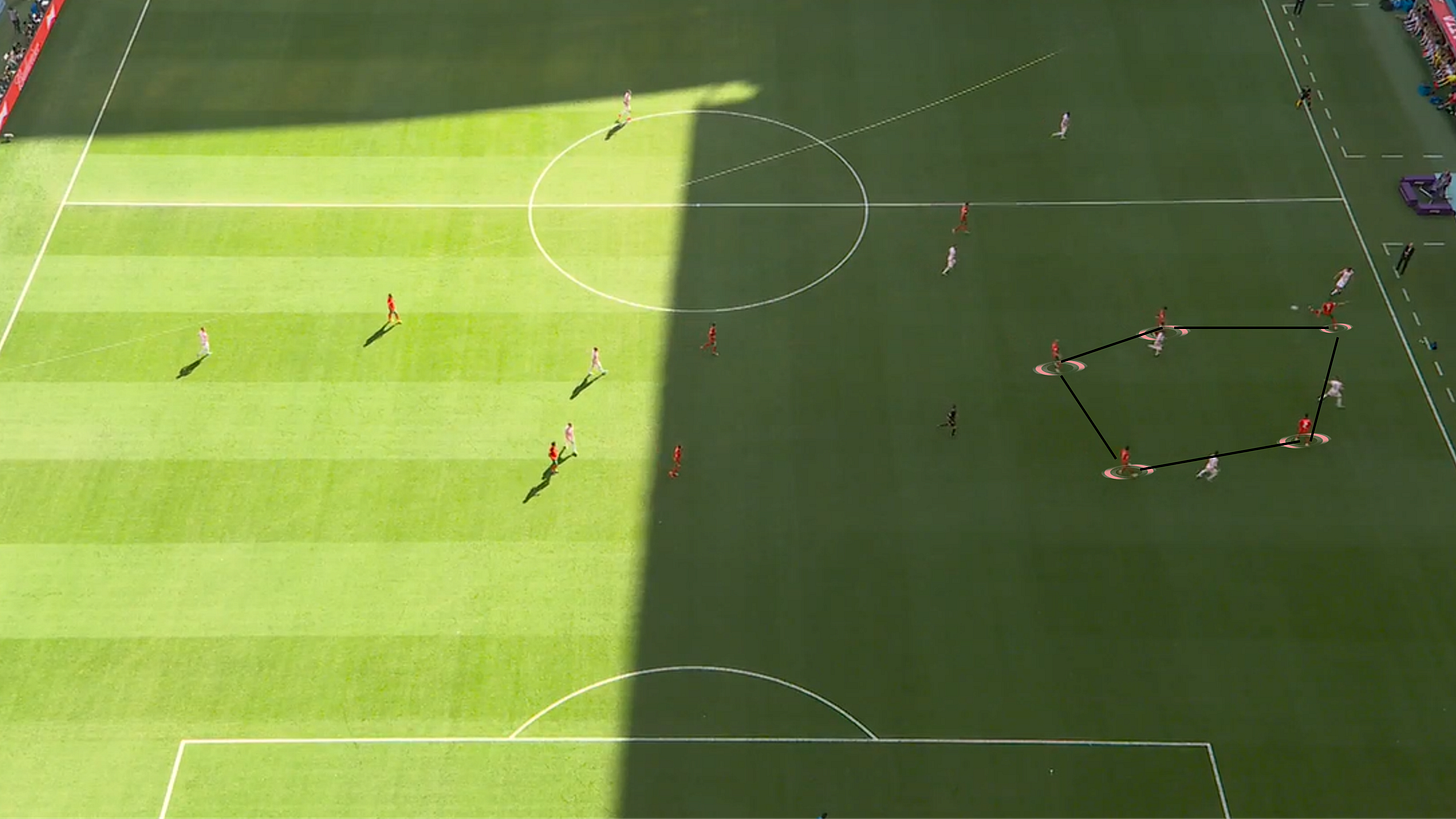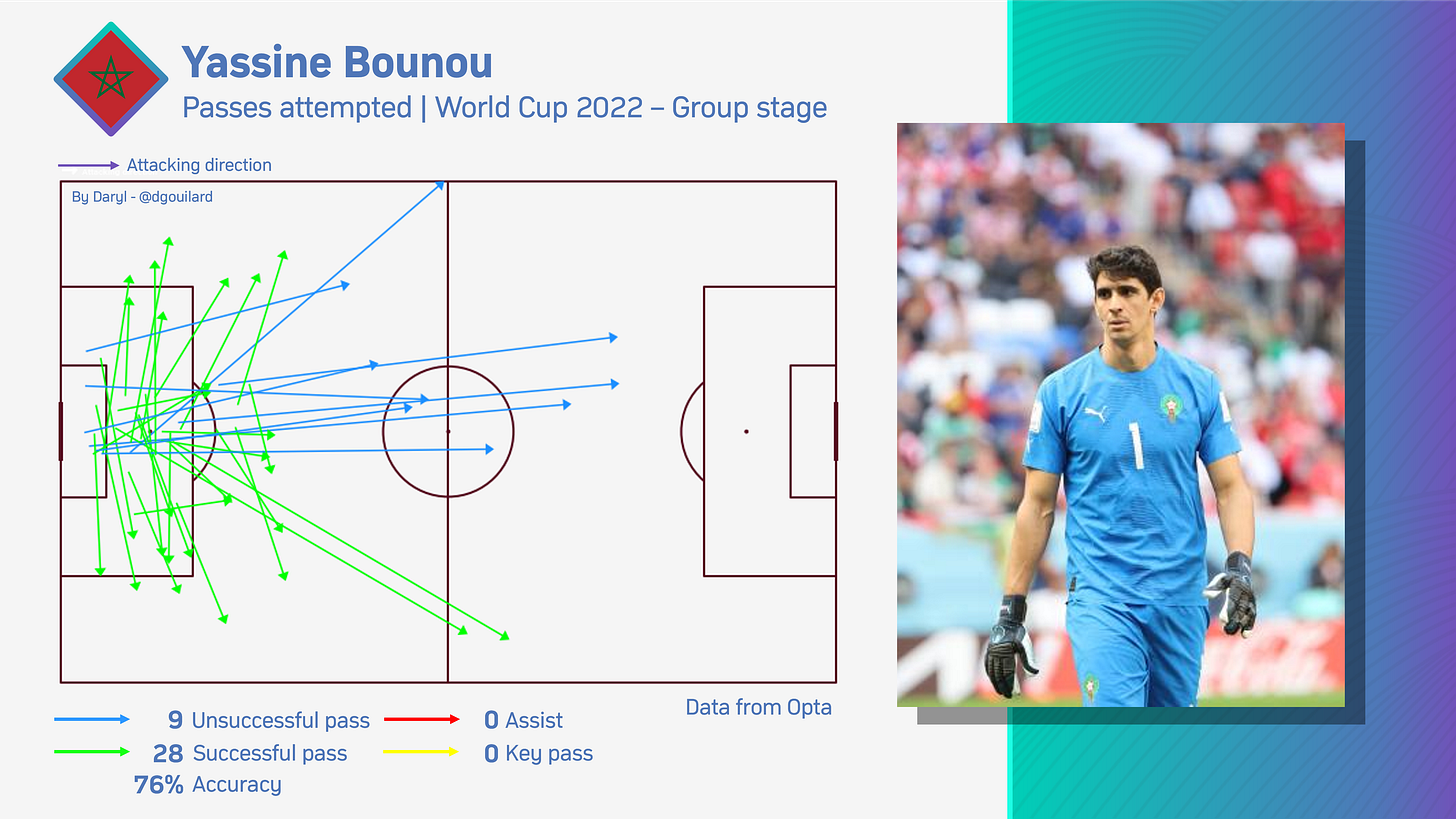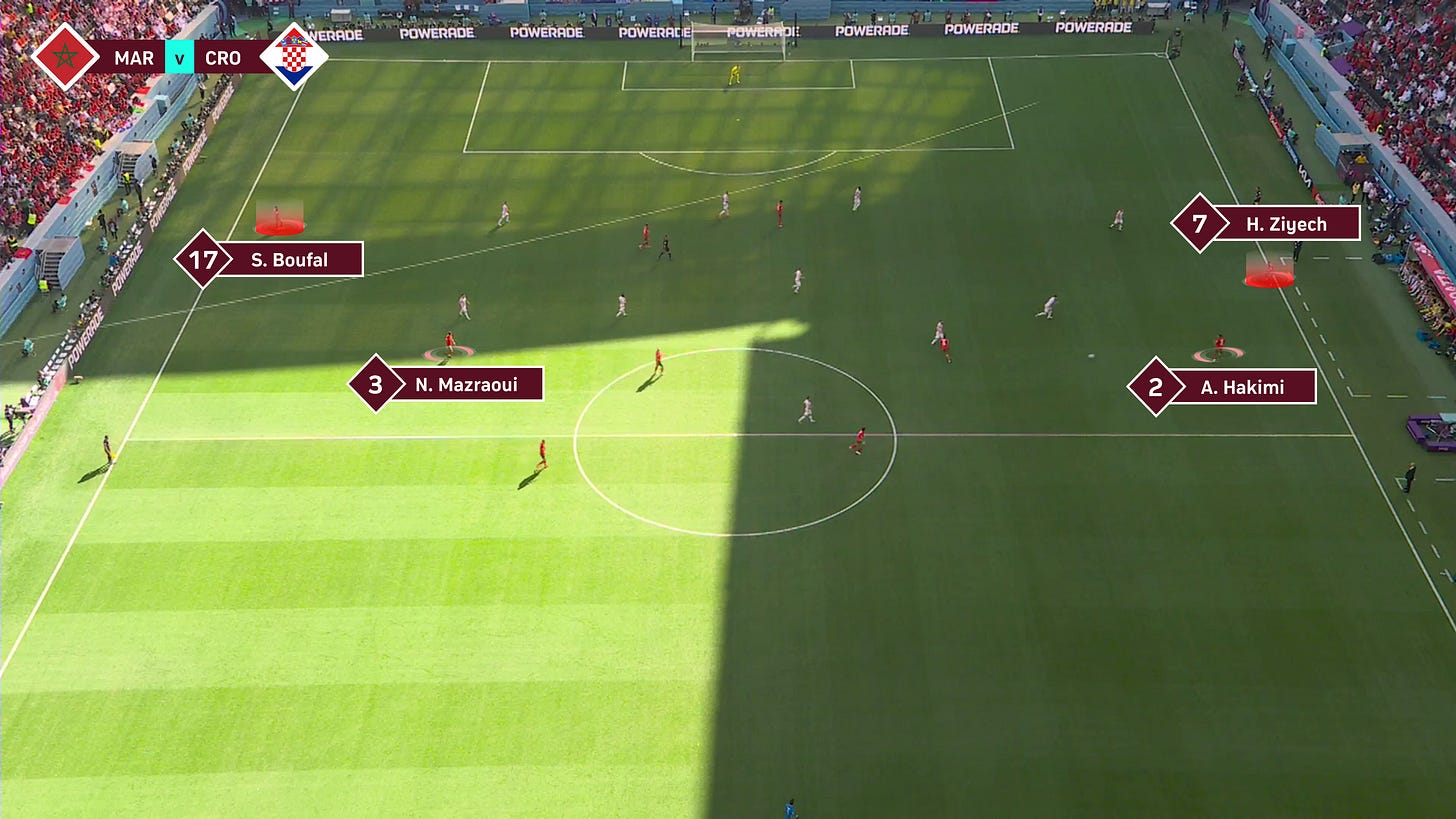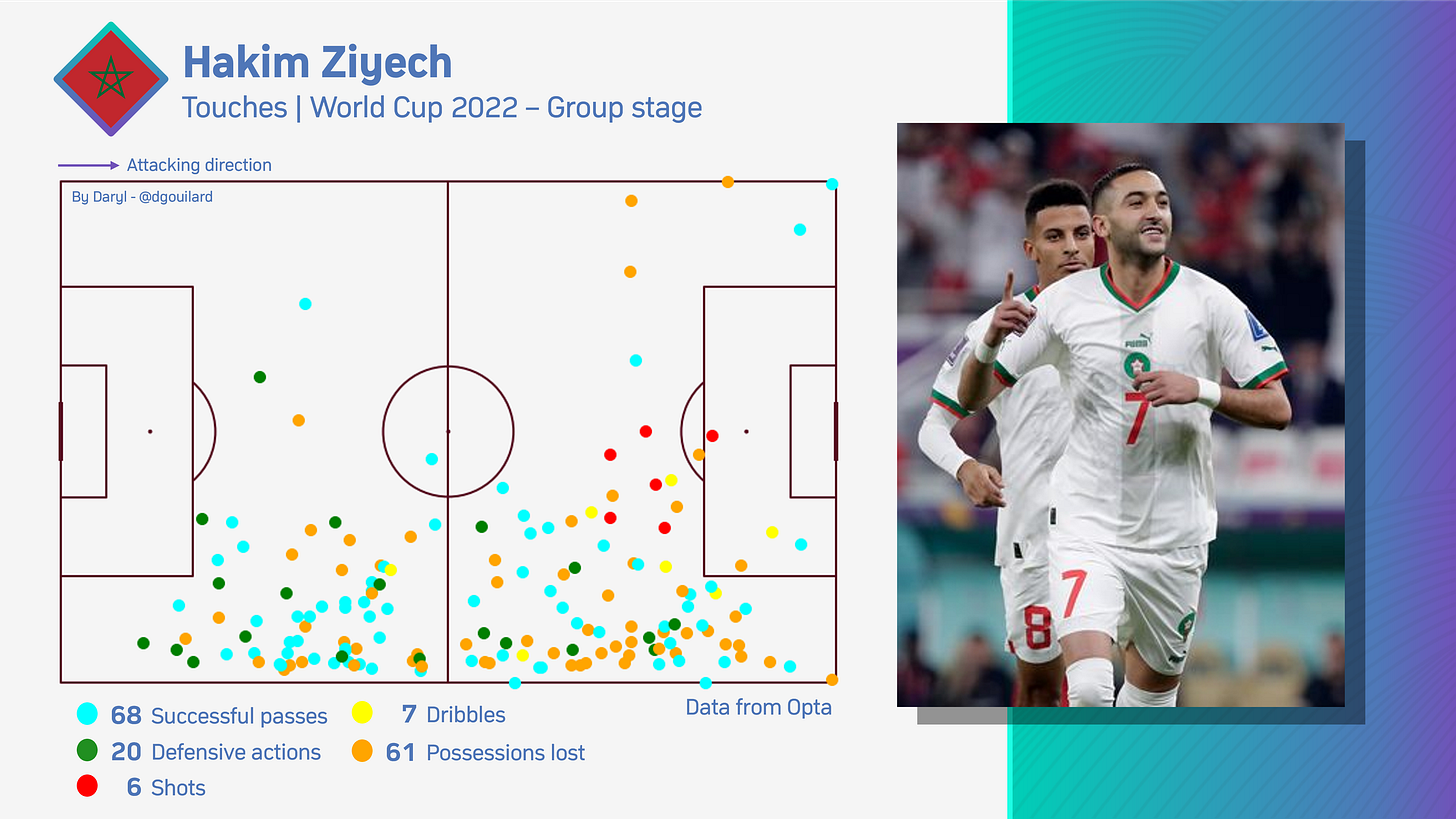Why Morocco should not be underestimated against Spain
A look at Morocco's group stage performance at the World Cup 2022 ahead of their Round of 16 clash with Spain
Four years ago in Russia, Morocco was drawn into a very tough group with former world champion Spain, then-European champion Portugal, and IR Iran, who finished first in their group in the third round of the 2018 Asian Qualifiers. Although Morocco finished last in that group, the results did not reflect the valiant performance that they had shown against all three opponents. This time around in Qatar, the African side once again found themselves in a tricky group with 2018 finalist Croatia, 2018 semi-finalist Belgium, and a young Canada side, who also finished first in the Concacaf Qualifiers. Unlike in 2018, their performance in the group stage once again impressed many and they got the result that they deserved, topped group F and set up another meeting with Spain in the round of 16.
As the underdog of the tie, there is no doubt that many will expect Morocco to come out of the match on the losing side. However, as this World Cup has shown, expect the unexpected. And Morocco’s performance in the group stage shows us that they have the quality to overcome Spain and secure a spot in the quarter-final, which will be the first time that they ever do so. So, what can Spain expect from this Moroccan side led by Wahid Regragui?
A well-organised defensive structure
Like many teams in this World Cup, Morocco put heavy emphasis on creating a solid defensive structure that can prevent top teams from breaking them down, and it has worked to some extent. At times, Belgium and Croatia found it hard to break down Morocco’s 4-1-4-1 mid block through quick combinations or through passes, the playing style that Spain will likely to go with for this match. Morocco’s 4-1-4-1 defensive shape is set inside the middle third with their defensive line pushes up very high, usually near the centre circle and halfway line. The midfield line and the lone striker up front rarely engage with the opposition when they have the ball inside the final third, but they will start to do so once the ball is moved into the middle third.
Interestingly, the distance from Morocco’s goal to where they set up their high block or mid block is consistent throughout the three group stage matches. According to FIFA’s data, against Belgium and Croatia, the distance from their goal to their high block was 48 metres; while against Canada, that distance was 44 metres. Meanwhile, the distance to their mid block throughout all three matches was between 37 and 38 metres. This shows that no matter the strength of the opposition, Morocco would still push their defensive line very high up to create a compact defensive shape.
This comes with a drawback, however. Against Belgium and Croatia, the opposition’s centre-backs were able to frequently target the attackers up front using long passes over the top of Morocco’s defensive shape. On several occasions, Romain Saïss and Nayef Aguerd were able to track back and deal with such situations. But on other occasions, these situations led to an attack for the opposition and allowed them to gain territories in quick succession. Against Spain, who have competent passers as centre-backs in Rodri Hernández and Aymeric Laporte, Morocco will need to be extra careful with long passes over the top to Marco Asensio or Álvaro Morata.
Inside of their own half, Morocco’s defensive principle remains the same as their compact mid block retreats into an even more compact low block that sits right in front of their 16-yard box. Their goal is still forcing the opposition to attack down either flank while limiting the space that the opposition have centrally.
Another interesting aspect to look out for from Morocco’s defensive shape is that they are set up to lure the opposition to attack down either flanks, rather than down the central area. This is clearly evident against Belgium where their central midfielders Selim Amallah and Azzedine Ounahi followed Belgium’s midfielders Axel Witsel and Amadou Onana very closely, not allowing both to receive the ball from Belgium’s back three inside the middle third and forcing them to pass the ball wide to the full backs and wingers.
When the opposition have passed the ball wide, Morocco attempted to create numerical superiority out wide, or at least match the opposition’s number, by having four players and defensive midfielder Sofyan Amrabat overload the wide space. From there, they will attempt to regain possession and create a counter-attack.
In such situations, Morocco are trying to capitalise on the fact that if the opposition commit numbers to attack down one side of the pitch and they manage to win the ball back, they can attack through areas where the opposition will have less players. Because their full backs and wingers are very capable in winning 1v1 ground duels, this will allow Morocco to break quickly into the opposition’s defensive third.
This will be one of Morocco’s biggest attacking threat against Spain should they are capable in regaining possession out wide. If Jordi Alba and César Azpilicueta start as full backs for Spain, Morocco can have a pace advantage since their winger pairing of Hakim Ziyech and Sofiane Boufal can challenge Alba and Azpilicueta in 1v1 duels and have a higher chance of coming out on top. Furthermore, Morocco’s full backs Achraf Hakimi and Noussair Mazraoui are also very quick and can make dangerous overlapping runs. If Dani Olmo and Ferrán Torres not track back to defend, this can leave Alba and Azpilicueta in a tricky 2v1 situation. In the situation where Alejandro Baldé starts at left back for Spain, this will set up a very interesting match up with Hakim Ziyech since both players are quick, but Baldé’s defending ability might not be able to help him win the ball back from Ziyech’s feet.
Quick transitional play
In possession, Morocco adopt a mixed style of direct play and possession-oriented depends on the strength of the opposition that they play against. Against Canada, they are more comfortable in controlling the ball inside their own half and create attacking situations from short passes and movements. Against Belgium and Croatia, Morocco can be direct at times with goalkeeper Yassine Bounou and centre back Nayef Aguerd playing long passes to either flank or to the lone striker up front, usually Youssef En-Nesyri or Abderrazak Hamdallah.
It is not very hard to find a Moroccan player making a long pass to switch the play in either of their three group stage matches. While playing out from the back, the centre backs can switch the play to the other side to allow the full back and the winger to run into the space that the opposition are leaving unoccupied. During a transitioning situation, one of Morocco players can make a long pass to the opposite side of the pitch to get the ball out of the overloaded area and also creating a counter-attacking opportunity for the players on the opposite side.
The reasons why both Bounou and Aguerd have the tendency to pass the ball to either flank are they look to switch the play from one side to the other or they are targeting their passes towards both wingers Ziyech and Boufal, who stay very wide rather than sit narrow. This allow the full backs to stay slightly narrower at times or they can choose to hug the line with the winger in front with the aim of stretching the opposition’s defensive shape.
In Ziyech, Morocco have a left-footed winger who plays on the right, and Boufal is the opposite. As both prefer to stay wide and also receive the ball out wide, this allow them to cut inside with their preferred foot, create space for Hakimi and Mazraoui to overlap into, and also create space for them to create a goal-scoring chance either for themselves or for their teammates.
One attacking play that Morocco might use in the upcoming match has led to one goal and one shot off target for them against Canada and Belgium respectively. When a centre back or a full back has the ball on one side of the pitch, one winger will attempt to come close to the ball carrier and drag the opposition’s full back out of position, which will open up the space behind that full back. Against Canada, when Hakimi spotted that space, he made a through ball into that space and allowing En-Nesyri to make a run into the space in between Canada’s centre-backs to receive the ball and score Morocco’s second goal.
Against Belgium, Aguerd was the one who spotted the space behind Belgium’s left-back. Because Amallah had ran into Onana and the Belgian midfielder could not track back, this allowed Hakimi to make an overlapping run into that space and received the ball from Aguerd for a shot a few seconds later. This is not a play that Morocco use often in their group stage matches, but whenever there was an opportunity to use it, they usually ended up with a goal-scoring chance inside the opposition’s 16-yard box. Both of this situations also took place on Morocco’s right-hand side, which will be Spain’s left-hand side and the responsibility to defend these situations will fall on the hands of Olmo and either Alba or Baldé.
However, according to FBRef/Opta (feels slightly weird writing that), it is worth noting that Morocco finished the group stage with the joint-fifth-lowest xG in the entire comparison (I know, small sample size) with only 2.4 xG created throughout three matches. On average, their xG per match is only 0.8 xG. Again, the sample size is very small to actually show if these numbers can be true throughout a lengthy period or not but it is still worth pointing out because of how overperforming Morocco are in terms of their xG.
Furthermore, they currently have the fourth lowest possession percentage in the entire competition with only 37% (according to FBRef/Opta). Against Spain, a team whose style is mainly built based on how much of ball possession that they can control, Morocco can expect another match where they will not have a lot of the ball. This means chances will be at a premium for Regragui’s side (and also explains why they are overperforming – unable to create plenty of chances but are clinical in front of goal) and they need to be very clinical inside the 16-yard box to be able to push Spain to their limit, similar to the way that Japan did in the group stage.
Morocco’s midfield
At this point, the article is getting very long and I did not intend to write a different section to analyse Morocco’s midfielders, so I will try to summarise my points as short as possible.
When Morocco play out from the back, the team is usually distinctively separated into two groups of players. The first group is responsible for bringing the ball out of the defensive third either by passes or dribbles. This group consists of all four defenders, with the full backs staying slightly high because defensive midfielder Sofyan Amrabat usually drops in between the centre backs to create a back three. More on Amrabat a bit later. The second group are the attackers group and they are responsible for taking up positions where they can receive passes from players of the first group and immediately transition into attack as quick as possible.
In this group, we will find Morocco’s two number 8s, who tends to stay near the opposition’s midfield line and will either drop deep to receive the ball or move forward to put pressure on the opposition’s defenders. When the ball is inside the middle third, Ounahi, Amallah, and Abdelhamid Sabiri will run into the channels (the space in between the centre back and the full back) and provide support for the winger on the attacking side. Because Morocco is a wing-oriented team when they have the ball, the runs from Morocco’s central midfielders allow them to have another attacking option inside the box or just simply work with the winger and the full back to advance the ball into the final third. The central midfielders are very dynamic as they usually have to move from a central position to a wide position and back, and they also play a key role in the team’s defensive shape as shown above.
Now to one of my favourite players to watch in the group stage, Sofyan Amrabat. Playing as a holding midfielder, Amrabat takes on the role of both a deep-lying playmaker and a ball-winner for Morocco. As mentioned above, when the team have the ball, he tends to drop in between the centre backs to allow both full backs to stay higher. When he receives the ball, his vision allows him to distribute the ball to basically everywhere on the pitch. Most of his passes are targeted down either flank as this allows Morocco to advance down the wide area through the full backs and the wingers. He also dictates the play with his passes as he can circulate the ball between himself and the centre backs to allow his teammates to find spaces where they can occupy and then send a long ball towards them to advance the attack.
Defensively, he is an aggressive, but brave player. Amrabat usually involves in duels to regain possession and rarely shy away from challenging the opposition’s best players for the ball. He times his tackles well to win the ball, albeit there are some occasions where he committed unnecessary fouls due to his aggressive nature, but fortunately that has not led to him being suspended for this match. The battle between Amrabat and Pedri in the central of the pitch will definitely be ones to watch in the match.
Conclusion
Against a Spanish team who is among the favourites to make it to the final and has good cohesion among the team, it is definitely a hard challenge for Morocco to secure a win and make it into the quarter-final. However, this match will be decided based on who wants it more and shows more fight for every play. If Morocco somehow come out on top, it might involve a small element of luck but it is also because they have a clear and consistent plan of what they want to do, which they have shown throughout the group stage. While many will see Spain winning this clash easily, don’t sleep on Morocco because they might surprise you.

















